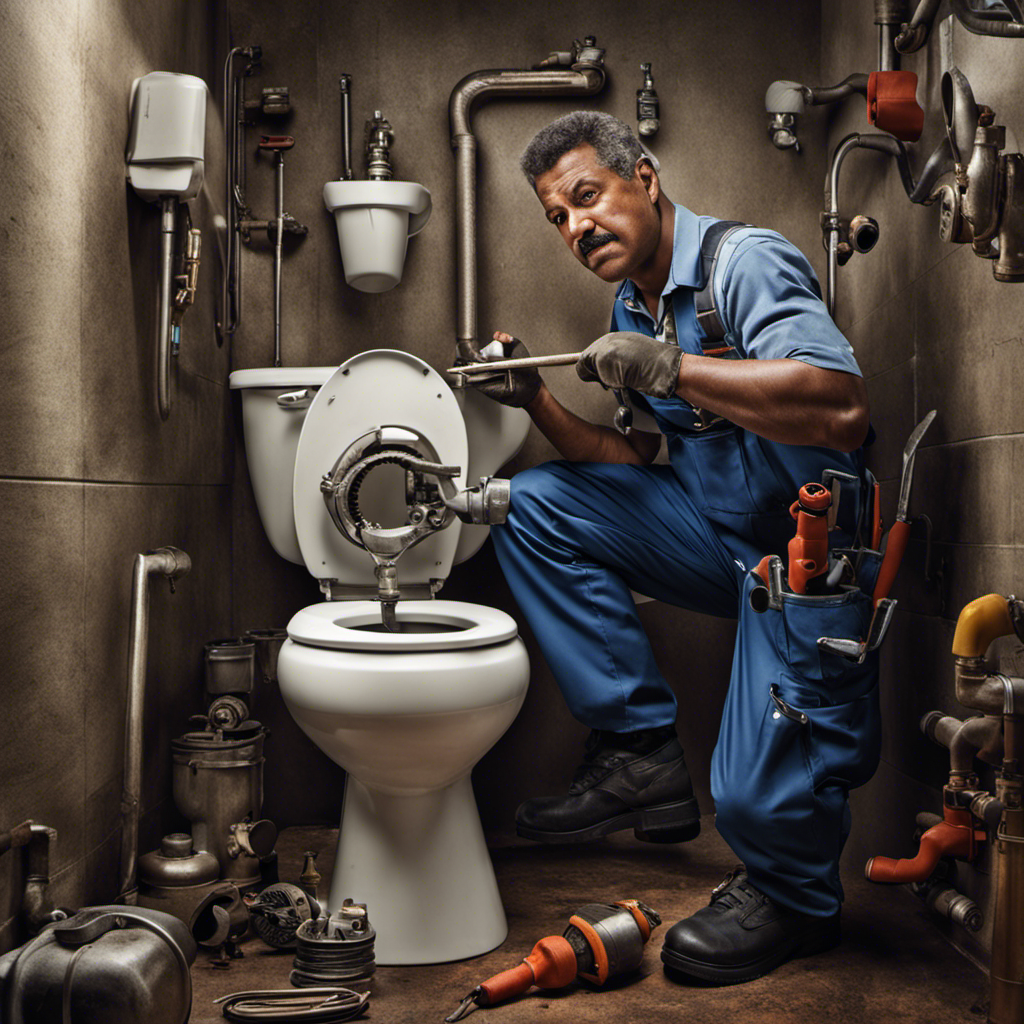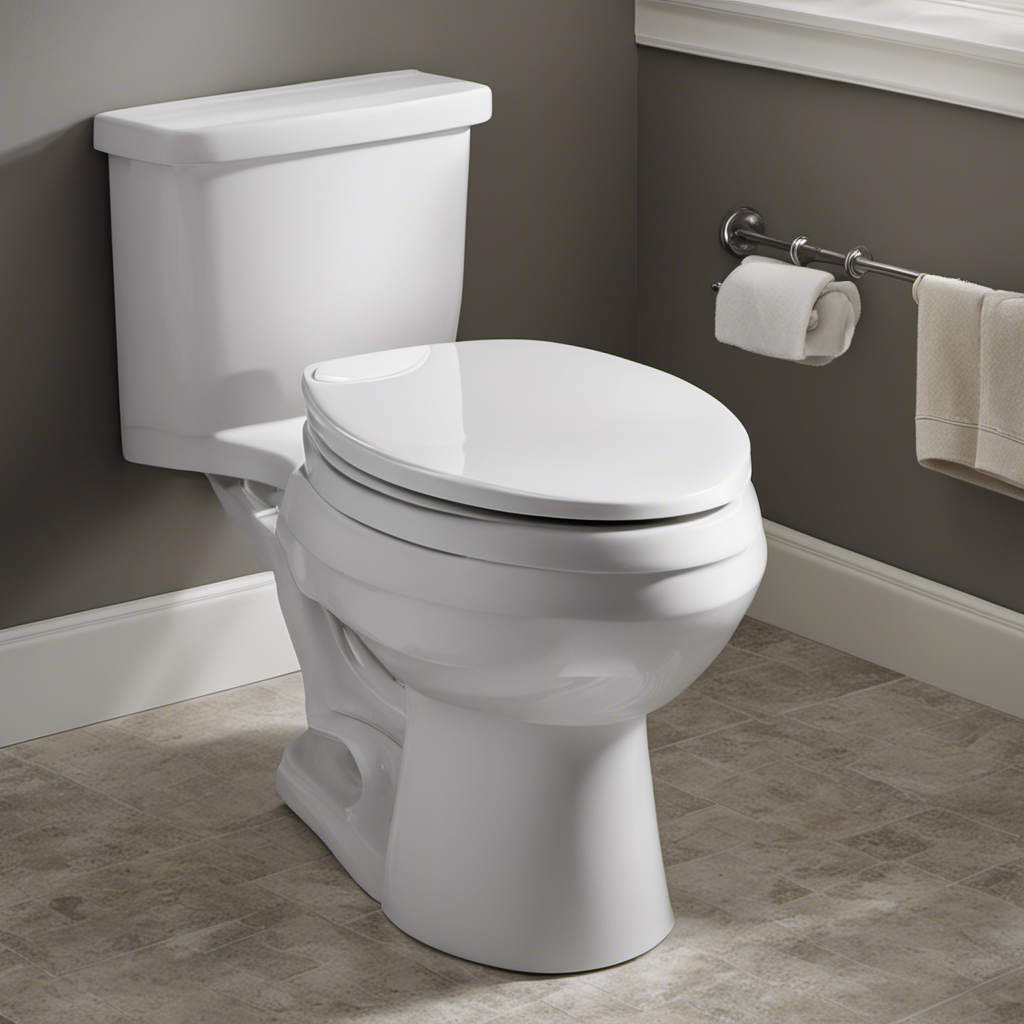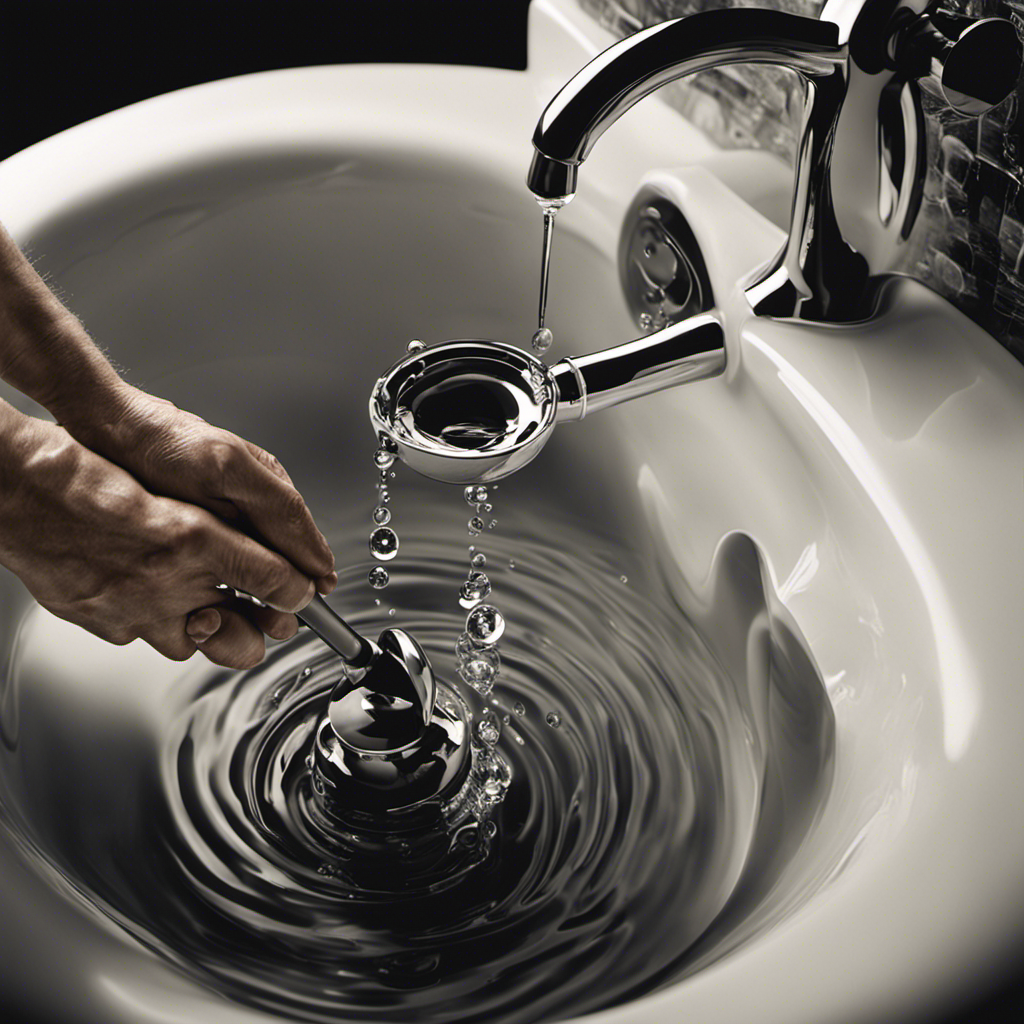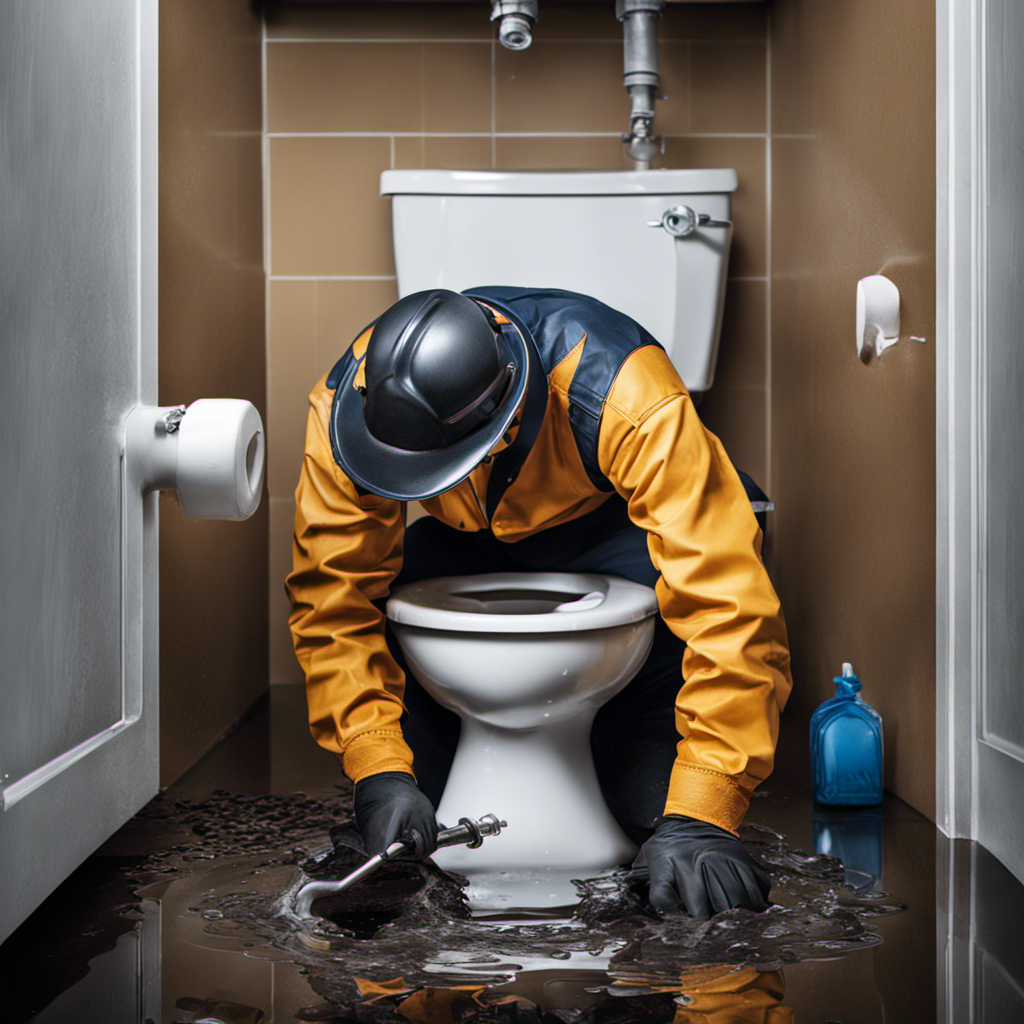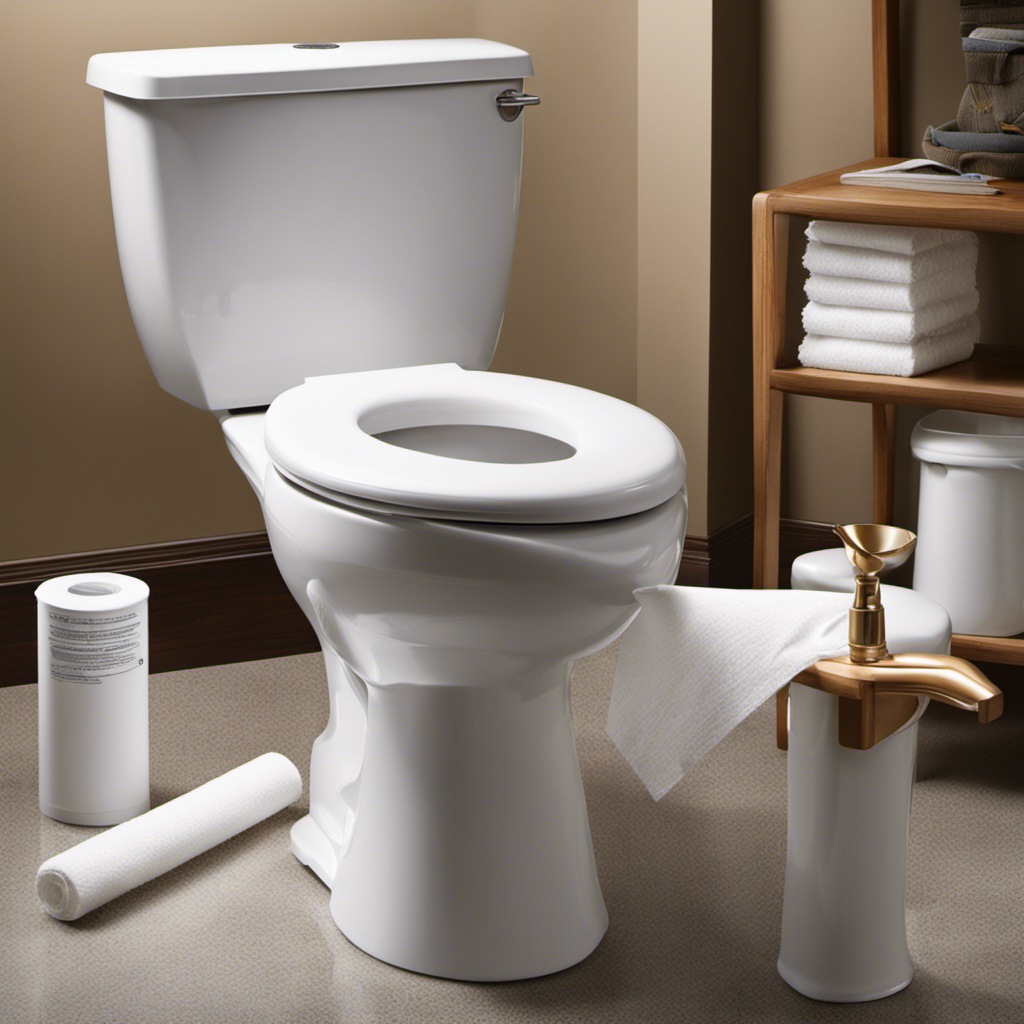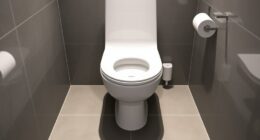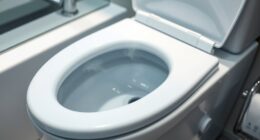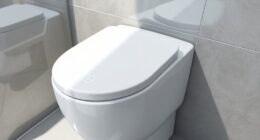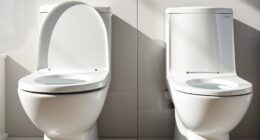Did you know that toilets can last anywhere from 10 to 50 years with proper care? It’s true! By following a few simple maintenance steps and ensuring the availability of spare parts, you can significantly increase the lifespan of your toilet.
The durability of toilets is thanks to their unchanged design and reliance on gravity-based flushing technology. In fact, most of the time, you won’t need to replace the entire unit, as spare parts like flappers and tank bolts are readily available.
So, let’s dive into the world of increasing toilet lifespan through maintenance, durability, and spare parts.
Key Takeaways
- Toilets can last 10 to 50 years with proper care and maintenance.
- Spare parts for toilets are readily available, making repairs more cost-effective than buying a new one.
- Toilets are made of durable porcelain, which contributes to their long lifespan.
- Regular cleaning and prevention of physical impacts and hard water deposits are essential for maintaining toilet lifespan.
Importance of Regular Maintenance
Regular maintenance is essential for prolonging the lifespan of toilets, as poor maintenance practices can decrease their durability. Regular cleaning is crucial in reducing wear and tear on the toilet. This includes cleaning both the interior and exterior surfaces, as well as the flushing mechanism.
It is important to use appropriate cleaning products that are specifically designed for toilets, as harsh chemicals can damage the toilet’s components. In addition to cleaning, it is also necessary to check for any leaks or cracks in the toilet’s structure and address them promptly.
Regular maintenance not only ensures the proper functioning of the toilet but also extends its lifespan, saving homeowners from the hassle and expense of premature replacements.
Enhancing Durability Through Careful Use
With proper care and prevention of damage, toilets can withstand years of use. To ensure the longevity of a toilet, it is essential to follow some maintenance tips and prevent any potential damage. Regular cleaning, using appropriate cleaning products, and avoiding physical impacts are crucial for maintaining the durability of a toilet. Additionally, preventing hard water deposits and ensuring the proper functioning of the flush system can contribute to extending the lifespan of the toilet. By taking these precautions, homeowners can avoid frequent repairs and the need for a new toilet. Taking care of a toilet not only saves money but also ensures a hygienic and functional bathroom. Refer to the table below for some toilet maintenance tips and ways to prevent toilet damage.
| Toilet Maintenance Tips | Preventing Toilet Damage |
|---|---|
| Regular cleaning | Avoid physical impacts |
| Use appropriate cleaning products | Prevent hard water deposits |
| Ensure proper flush system functioning | Avoid excessive weight on the toilet |
| Check for leaks and fix them promptly | Avoid flushing non-flushable items |
| Regularly inspect and replace worn-out parts | Properly anchor the toilet to the floor |
Essential Spare Parts for Toilet Repairs
Toilet repairs often require the replacement of components such as flappers, overflow tubes, and tank bolts, which are readily available as spare parts. These spare parts are essential for troubleshooting common issues and ensuring the smooth functioning of toilets.
Here are some important toilet repair tools and troubleshooting techniques:
- Plunger: Used to unclog toilets by creating pressure to dislodge blockages.
- Toilet auger: Ideal for clearing stubborn clogs that cannot be resolved with a plunger.
- Adjustable wrench: Necessary for loosening and tightening nuts and bolts during repairs.
- Toilet repair kit: Includes all the necessary components for fixing common toilet issues.
- Leak detection tablets: Used to identify leaks in the toilet tank by changing the water color.
With the right tools and troubleshooting techniques, individuals can save money and extend the lifespan of their toilets by effectively addressing and resolving common toilet problems.
The Role of Quality Materials in Prolonging Lifespan
Porcelain, a durable ceramic material, contributes to the long lifespan of toilets due to its high mechanical strength and non-absorbent properties.
The role of porcelain in toilet durability is significant as it provides a sturdy and resilient structure for the toilet bowl. Porcelain’s high mechanical strength ensures that the toilet can withstand the pressure and weight placed on it during regular use.
Additionally, its non-absorbent properties prevent liquids from seeping into the porcelain, reducing the risk of damage and deterioration over time.
The impact of porcelain on toilet lifespan cannot be overstated, as it allows toilets to remain functional and reliable for many years. With proper care and maintenance, toilets made of high-quality porcelain can last for decades, making it an essential material in ensuring the durability and longevity of toilets.
Signs for Consideration of Toilet Replacement
Regular inspections and assessments of the toilet’s condition are crucial in determining if it needs to be replaced. There are several indicators that can help in making this decision.
- Frequent repairs: If the toilet requires constant repairs, it may be a sign that it is reaching the end of its lifespan.
- Constant clogging issues: Persistent clogs can indicate underlying problems with the toilet’s design, which may require a more effective toilet.
- Excessive water consumption: If the toilet uses a large amount of water per flush, upgrading to a water-efficient toilet can help save water and reduce utility costs.
- Aesthetics: An old, unattractive toilet can be replaced to improve the overall appearance of the bathroom.
- Water leakages or wobbliness: Leaks at the base or rusted tank bolts, as well as a wobbly toilet, are clear signs that it needs to be replaced.
Upgrading to a new toilet offers several benefits, including improved functionality, water efficiency, and aesthetics.
Frequently Asked Questions
Can I Use Bleach or Other Chemical Cleaners to Clean My Toilet?
Using bleach or chemical cleaners can be damaging to toilets. It is recommended to use eco-friendly cleaners or bleach alternatives. Proper cleaning techniques and best practices include regular cleaning with non-abrasive products to maintain the toilet’s lifespan.
How Often Should I Clean My Toilet to Ensure Its Longevity?
To ensure toilet longevity, clean it once a week. Using bleach sparingly and following proper cleaning techniques will prevent damage. Regular cleaning and maintenance are crucial for extending the lifespan of a toilet.
Are There Any Specific Maintenance Tasks I Should Perform Regularly to Prolong My Toilet’s Lifespan?
Regular maintenance and proper cleaning practices are essential for prolonging a toilet’s lifespan. Performing tasks such as regular cleaning, preventing physical impacts, and avoiding chemical cleaning products can help ensure the longevity of the toilet.
Are There Any Specific Signs of Physical Damage or Wear That I Should Look Out For?
Signs of toilet damage include cracks in the porcelain, water leakages at the base, and rusted tank bolts. Toilet wear and tear indicators include wobbliness, constant clogging, and a poor flush system.
What Are Some Common Mistakes People Make That Can Reduce the Lifespan of Their Toilets?
Common mistakes that can reduce toilet lifespan include improper installation and using harsh chemical cleaning products. Neglecting regular cleaning and maintenance can also lead to issues with the toilet’s flushing mechanisms.
Conclusion
In conclusion, it is crucial to maintain and maximize the lifespan of toilets. Regular maintenance, careful use, and the availability of essential spare parts are key factors in achieving this goal.
By implementing proper care techniques and utilizing high-quality materials, toilets can endure for decades. However, signs such as frequent repairs, clogging issues, excessive water consumption, aesthetic concerns, and leaks should prompt consideration for a replacement.
Remember, by being diligent and proactive, individuals can extend the longevity of their toilets, saving both money and resources. So, seize the opportunity to sustain your sanitation sanctuary!
